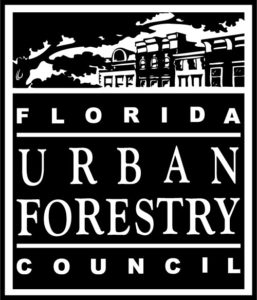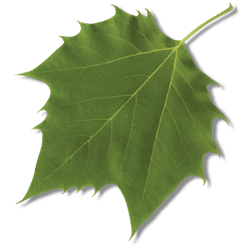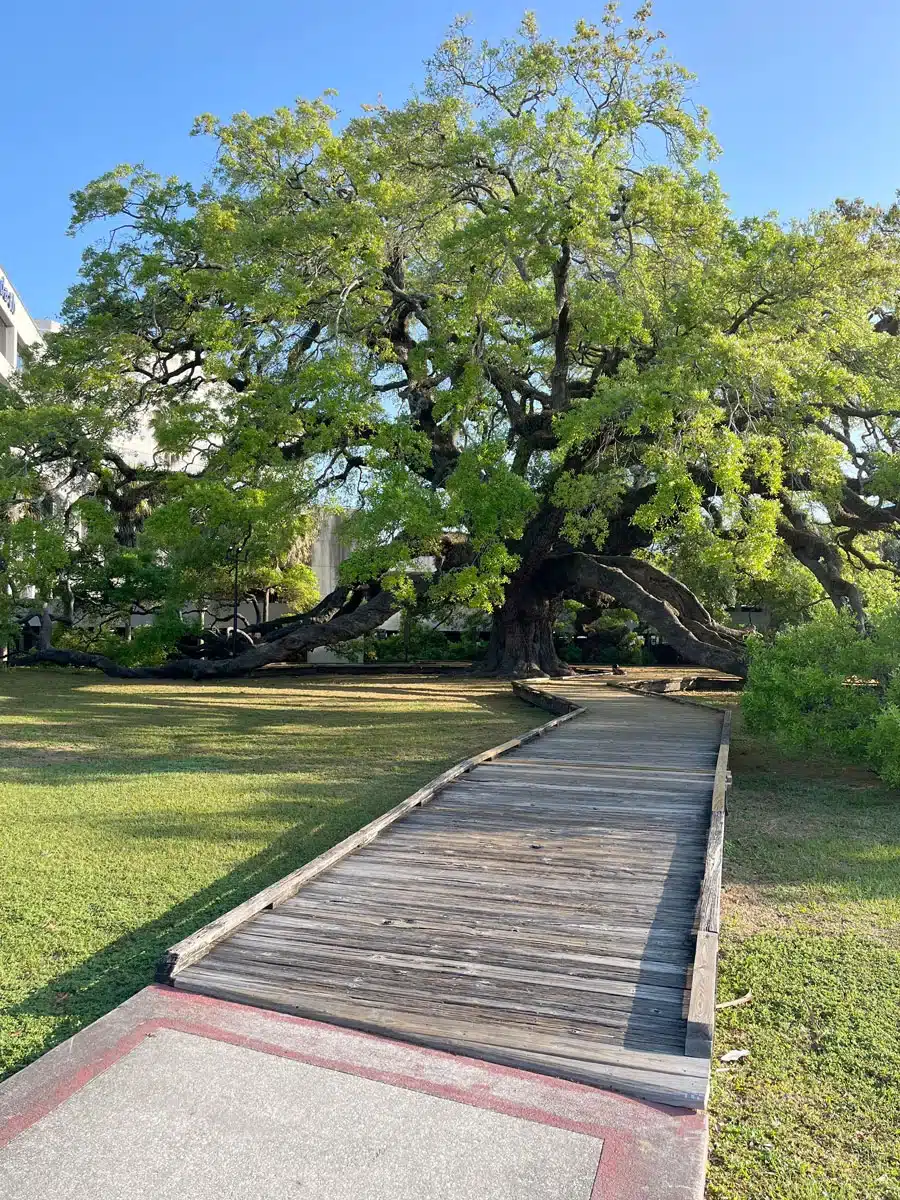The Treaty Oak is an impressive southern live oak (Quercus virginiana) and an iconic arboricultural landmark in downtown Jacksonville, FL. The tree is estimated to be 250 years old or more, predating the founding of the City of Jacksonville in early 1822. There are references that hint the tree was once known as, “Giant Oak.” In the 1930s, in a campaign to save the Giant Oak from incompatible land use development, Pat Moran – a journalist with the Florida Times-Union – solicited public support with stories boosting the tree’s historical significance. Moran published stories suggesting that early treaties between indigenous populations and European settlers were signed under its branches. Henceforth, the tree became popularly named, The Treaty Oak. Of course, this would have implied that the tree may have had reputable size for such legendary ceremonial events and was well over 250 years old.
The tree exhibits a trunk over 25ft in circumference, 70ft in height, and a canopy spread over 145 feet. One doesn’t need to climb the tree to walk among its branches. Large, low, well-developed limbs arch down, embed themselves in the ground and spring back up and out expanding its reach.
Currently, the City’s largest tree resides in the City’s smallest park. In 1964 Jessie Ball duPont saved the tree from destruction by buying the property surrounding the tree and donating it for a park that now bears her name. The tree and property are maintained through the City’s Parks & Recreation Department. Through the years, the tree survives through the preservation efforts of the stewardship of City staff; protective ordinance; the advocacy of corporate sponsors, local civic groups, and private individuals; and a pro-active tree-care plan. It should come as no surprise that the preservation efforts parallel the principles of S.O.A.P. (Staff, Ordinance, Advocacy, and Plan) necessary for a successful urban forestry program.
Routine pruning, cabling, a lightning protection system; elevated boardwalk, and other tree-care protective measures are in place to protect the mighty oak.
The vegetative management staff of certified arborist with JEA – Jacksonville’s utility provider, once oversaw an inmate nursery program where Treaty Oak acorns were collected, seedling were grown, and saplings were planted throughout Jacksonville.
 At the base of an adjacent live oak is a plaque that reads, “Trees At Work, A Planting Project by The Florida Urban Forestry Council, August 19, 1999.” The purpose was to establish additional live oaks throughout the park to maintain a mature oak canopy as overmature trees age out.
At the base of an adjacent live oak is a plaque that reads, “Trees At Work, A Planting Project by The Florida Urban Forestry Council, August 19, 1999.” The purpose was to establish additional live oaks throughout the park to maintain a mature oak canopy as overmature trees age out.
True to form, the Treaty Oak is a classic southern live oak with strong, dense wood; circular crown; and simple, ovate, leathery leaves. The low, spreading canopy, wider than tall – potential growth 80 ft in height and 120 ft width – has superior wind resistance and shade potential. When mature, a large live oak can dominate a landscape and live for centuries.
Florida’s Champion live oak is in Alachua County with a circumference of 36.5 ft, height of 78 ft, and spread of 160.5 ft. The National Champion live oak is in Ware, Georgia with a circumference of 36 ft, height of 78 ft, and spread of 161 ft.







